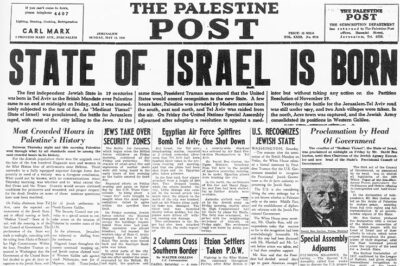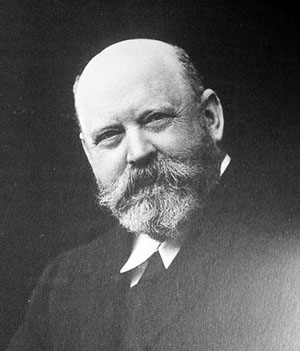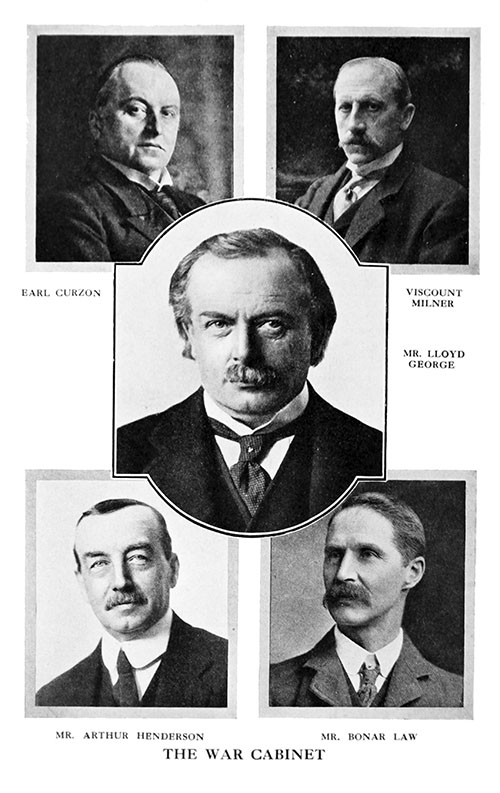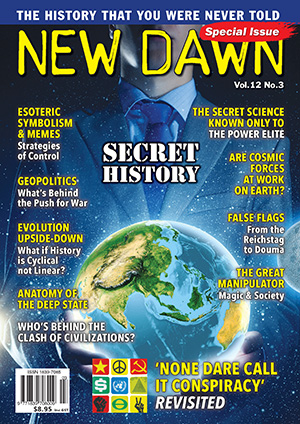From New Dawn Special Issue Vol 12 No 3 (June 2018)
The conflict between Israel and the Palestinians has barely been out of the news since the State of Israel was created in 1948. Few people are aware of the secret wheeling and dealing that went on behind the scenes in the lead-up to the fateful decision of the British government to announce its support for the creation of a Jewish homeland.
The critical events discussed in the following article took place during World War I, the first global conflict in which millions of young men died on the battlefield. Jim Macgregor and Gerry Docherty, authors of the book Hidden History: The Secret Origins of the First World War, have previously appeared in New Dawn, writing about the real power behind the war, the group they identified as “The Secret Elite” – made up of bankers and politicians.
In the following exclusive article, they expose the shocking truth behind the controversial Balfour Declaration that justified the creation of a Jewish homeland in Palestine, and subsequently the State of Israel.
LETTER FROM ARTHUR BALFOUR TO LORD WALTER ROTHSCHILD
Foreign Office, November 2 1917
‘Dear Lord Rothschild,
I have much pleasure in conveying to you on behalf of His Majesty’s Government the following Declaration of sympathy with Jewish Zionist aspirations which have been submitted to and approved by the Cabinet:
His Majesty’s Government view with favour the establishment in Palestine of a national home for the Jewish people, and will use its best endeavours to facilitate the achievement of this object, it being clearly understood that nothing shall be done which may prejudice the civil and religious rights of existing non-Jewish communities in Palestine, or the rights and political status enjoyed by Jews in any other country. I should be grateful if you would bring this Declaration to the knowledge of the Zionist Federation.
Yours sincerely,
(signed) ARTHUR JAMES BALFOUR’1
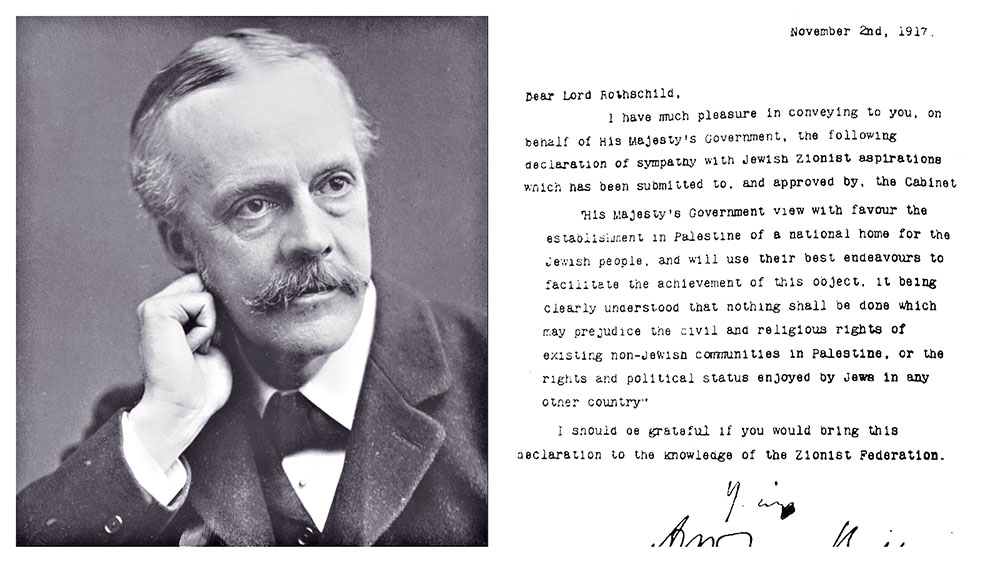
The above letter was released by the British Foreign Office and printed in The Times on 9 November 1917.
Why at this critical juncture did the British War Cabinet decide publicly to favour Palestine as a national home for the Jewish people? There was a war on, and it wasn’t going particularly well. What was their purpose? Where did this fit into the Secret Elite’s strategy to crush Germany and advance its globalist ambition? How had it come about that a homeland for one specific religious group appeared on the agenda as if it was a solution to an unstated problem? Even if anyone believed the lie that the Allies were fighting for the rights of smaller nations, why had religious identity suddenly become an issue of nationhood? Had anyone considered giving Catholics such rights in Ireland or Muslims such rights in India? Was the world to be divided into exclusive religious territories? Of course not.
To complicate matters further, one nation (Britain) solemnly promised a national home to what would become in time a second nation (the Jewish State of Israel) on land which belonged to another people (Palestinian Arabs) while it was still an integral part of a fourth (the Ottoman/Turkish Empire).2 In pandering to a relatively small group of Zionists, the Balfour Declaration was bizarre, deceitful and a deliberate betrayal of the loyal Arabs fighting in the desert war against the Turks. Perfidious Albion had rarely plumbed such duplicitous depths.
The absolute destruction of Germany and her Ottoman allies promised to pave the way for a post-war re-drawing of maps and spheres of influence which would advance the Secret Elite’s overall strategy – namely the control of the English-speaking elect over the world. The strategic sands of Arabia and the oil-rich lands of Persia, Syria and Mesopotamia had long been prime targets. These were the first in a number of prerequisites which would shape the Middle East after 1919 to the advantage of Britain in particular. Critically, as a neutral, America had to be very careful about open intervention even after she had entered the war in 1917, and to an extent Britain acted as her proxy in putting markers down for a new world order. It is important to remember that when early discussions about the future of a Jewish homeland in Palestine were in progress, little mention was made of American involvement. The truth is otherwise. America was directly involved in secret intrigues.
So, too, were small but influential groups of politicians and businessmen, English, American, French, Russian, men and women of the Jewish faith spread literally across the world, who supported a growing movement to establish a permanent homeland in Palestine. They were called Zionists. Take care with this term. Initially it included a range of Jewish groups which held different views and aspirations. Some saw Zionism as a purely religious manifestation of ‘Jewishness’. A small but intensely vocal group fostered political ambitions. This latter form of Zionism included those determined to ‘reconstitute’ a national home for their co-religionists. In the words of the former Viceroy of India, Lord Curzon, “a national home for the Jewish race or people” implied a place where the Jews could be reassembled as a nation, and where “they [would] enjoy the privileges of an independent national existence.”3
There were a small number of suggested sites for the proposed new homeland, including one in Uganda, but in the first years of the twentieth century a more determined Zionist element began to focus their attention on the former land of Judea in the Middle East. They spoke of the creation in Palestine of an autonomous Jewish State, a political entity composed of Jews, governed by Jews and administered mainly in their interests. In other words, the recreation of a mythical Jewish State as was claimed to exist before the days of the so-called ‘diaspora’.4 Few voices were raised to ask what that meant, on what evidence it was predicated, or how it might be justified? It was an assumed biblical truth. Not every Jew was a Zionist; far from it, and that’s an important factor which must be borne in mind.
Frequently, historians write versions of history which imply an event ‘just happened’. In other words, they begin at a point that creates the impression there was no essential preamble, no other influence which underwrote the central action. One example is the assassination of Archduke Ferdinand in Sarajevo on 28 June 1914. For generations, school pupils have been taught this murder caused World War I. Such nonsense helped deflect attention away from the true culprits. Another example can be found in the usual interpretation of the Balfour Declaration which has been described as the British Government’s note of approval for the establishment of a national home for the Jewish people, as if it turned up one day on the Foreign Secretary’s desk and was signed like the other items in his out-tray. It has been downplayed, granted but a minor mention in the memoirs and diaries of the politicians who carefully orchestrated its single sentence. The Balfour Declaration was much more than a vague promise made by British politicians under the pressure of war’s contingency. Such a simple interpretation has conveniently masked the international pressures which the hidden powers on both sides of the Atlantic asserted in favour of a monumental policy decision that opened the door to the eventual establishment of the State of Israel.
‘The Zionist Movement’
At the 261st meeting of the British War Cabinet on 31 October 1917, with Prime Minister Lloyd George in the Chair, the membership comprised Lord Curzon, Lord Alfred Milner, Andrew Bonar Law, (Conservative leader) Sir Edward Carson, G N Barnes (Labour Party), the South African General Jan Smuts and Foreign Secretary Arthur Balfour. This was the inner-circle formed mainly from the Secret Elite’s political agents to run the war.5 They remained behind the closed doors of 10 Downing Street after other war business had been completed. The military and naval representatives were dismissed before the War Cabinet’s inner cabal proceeded to discuss the on-going issue of ‘The Zionist Movement’. As always, Lloyd George’s War Cabinet secretary, Sir Maurice Hankey, recorded the minutes. This coterie of British imperialists, and Secret Elite members and associates, agreed unanimously that “from a purely diplomatic and political point of view, it was desirable that some declaration favourable to the aspirations of the Jewish nationalists should now be made.”6 To that end a carefully constructed form of words was tabled and the War Cabinet authorised Foreign Secretary Balfour “to take a suitable opportunity of making the following declaration of sympathy with the Zionist aspiration.” It was no co-incidence that some five days previously the editor of The Times had urged them to make this statement.7
Two days after the War Cabinet’s decision, a letter was sent from the Foreign Office to Lord Lionel Walter Rothschild (2nd Baron Rothschild) in London asking that he “bring this Declaration to the knowledge of the Zionist Federation.” It was signed Arthur James Balfour, and henceforth was known as the Balfour Declaration, though it was the product of many more minds than solely that of the British Foreign Secretary.8 Its precise wording was publicised across Jewish communities who hailed the letter as the beginning of a new epoch in their history. Despite the apparent care with which the War Cabinet attempted to lay down conditions to protect non-Jewish communities, in particular the rights of the Palestinian Arabs to whom the country belonged, the event was celebrated by Zionists across the world as a National Charter for a Jewish homeland.9 The genie was out of the bottle.
In truth, the letter was the product of years of careful lobbying in both Britain and America. It was neither a beginning nor an end-point. Though the communication was essentially between the British government and the Zionist Federation in Britain, it had an almost casual feel to it as if it was simply a letter between two members of the English gentry, Balfour and Rothschild. The Declaration was far from casual and much more contrived than a gentleman’s agreement.
By all known processes of law and morality, it was ridiculous. Consider the unprecedented nature of the proposal. Britain held no sovereign right whatsoever over Palestine or authority to dispose of the land.10 As if this would not cause sufficient confusion, the British Foreign Office had already promised parts of Palestine to the French, to the Arabs who owned the land, and finally, to the international Jewish community. Was there ever a better example of the wanton arrogance of the British imperialist ruling class? The very wording of the Balfour Declaration was ambiguous; the conditions set were impossible. What was meant by the phrase, “a national home”? It had no clearly defined meaning in international law. How could a foreign government promise to achieve world-wide approval for a national home for Jews in an Arab country without automatically prejudicing the rights of the Arabs whose ancestors had lived there for thousands of years?11 Its vagueness gave rise to interpretations and expectations which were certain to cause bitter dispute. What was going on?
Secret Discussions
The answer can be found by examining earlier versions of this controversial document and the extent to which Zionists on both sides of the Atlantic strove to nurture and protect it. Far from any notion of their sudden conversion to Zionism, the political drive to establish a Jewish homeland in the sands of the desert, British politicians had been engaged in such discussions for several years. This fact had been conveniently omitted from official histories, memoirs and government statements.
A previous War Cabinet meeting on 4 October 1917 had considered an almost identical draft declaration from Lord Alfred Milner, the most influential leader of the inner circle of the Secret Elite. He included the words “favour the establishment of a National Home for the Jewish Race.”12 The capitalisation of the term National Home was later altered, as was the very Milnerite phrase, “Jewish Race.” Lord Milner was a very precise thinker. While the words National Home implied that the Jewish people throughout the world should have a defined area to call their own, his version favoured “the establishment” of such a place. It did not imply a return to a land over which they had assumed rights. Secondly, Alfred Milner held race in great esteem. He defined himself with pride as a British “Race Patriot.”13 His wording was a mark of respect. Others feared it was a dangerous phrase which might be interpreted aggressively. It clashed with the concept of Jewish assimilation, like Jewish-Americans, and hinted that as a faith group, Jews belonged to a specific race of peoples. Consequently, his version was toned down.
Secretly, the War Cabinet decided to seek the opinion on the final wording of the declaration from both representative Zionists (their phrase) and those of the Jewish faith opposed to the idea of a national homeland. It is crucial to clearly understand that inside the international Jewish community there was a considerable difference of opinion, in favour of and against, this idea of a Jewish ‘homeland’. That these groups were apparently given equal standing suggested the Jewish community in Britain was equally split on the issue. They were not. The number of active Zionists was relatively small, but very influential.
Furthermore, the War Cabinet sought the American President’s opinion on the proposed Jewish homeland in Palestine.14 The minutes of the 245th meeting of the War Cabinet in London revealed that Woodrow Wilson was directly involved in the final draft of the Declaration. So, too, was his minder, Colonel Edward Mandell House,15 and the United States’ only Jewish Chief Justice, Louis Brandeis,16 both of whom telegrammed different views to the British government.17 On 10 September, Mandell House indicated that the President advised caution; on 27 September, Judge Brandeis cabled that the President was in entire sympathy with the declaration. Much can change in politics over two and a half weeks.
As each layer of the onion is slowly peeled away from the hidden inner core of the eponymous Declaration, it becomes apparent that the given story has glossed over key figures and critical issues. There are hidden depths to this episode that mainstream historians have kept from public view and participants have deliberately misrepresented or omitted from their memoirs.
Secret Elite Fully Involved
The minutes of the War Cabinet Committee held on 3 September 1917 show that the earlier meeting had also been crammed with Secret Elite members and associates including Leo Amery, formerly Milner’s acolyte in South Africa.18 Item two on the agenda revealed that “considerable correspondence… has been passed between the Secretary of State for Foreign Affairs [A J Balfour] and Lord Walter Rothschild… on the question of the policy to be adopted towards the Zionist movement.”19 What? “Considerable correspondence” had been exchanged between Lord Rothschild and the Foreign Office; not a letter or enquiry, but considerable correspondence. A copy of one of these letters sent from the Rothschild mansion at 148 Piccadilly on 18 July 1917 has survived in the War Cabinet minutes. What it reveals shatters the illusion that the British government’s promise of support for a Jewish national home in Palestine stemmed exclusively from the Foreign Office under the pen of Arthur Balfour. Lord Rothschild’s letter began:
“Dear Mr. Balfour,
At last I am able to send you the formula you asked me for. If his Majesty’s Government will send me a message on the lines of this formula, if they and you approve of it, I will hand it on to Zionist Federations and also announce it at a meeting called for that purpose…”20
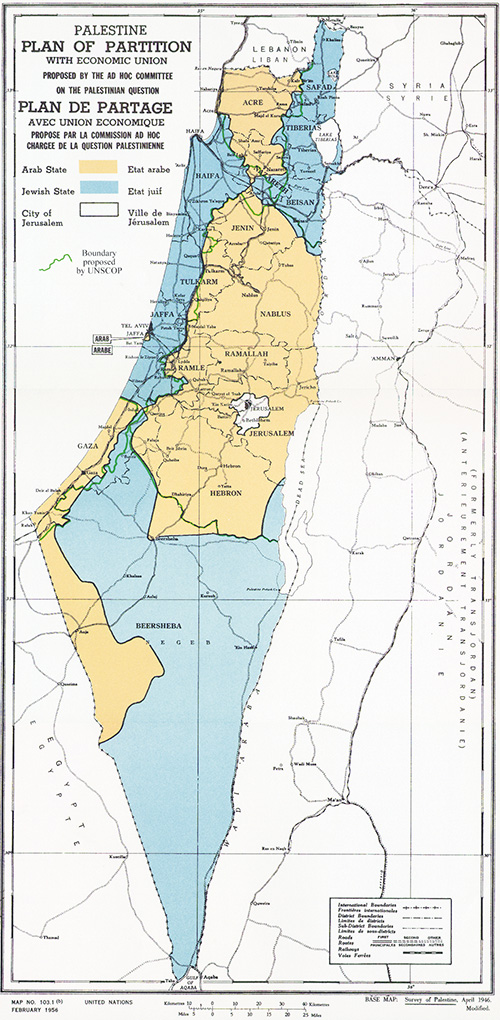
He enclosed his (Rothchild’s) recommendation for a draft declaration. It comprised two sentences: “(1) His Majesty’s Government accepts the principle that Palestine should be reconstituted as the National Home of the Jewish people. (2) His Majesty’s Government will use its best endeavours to secure the achievement of this object and will discuss the necessary methods and means with the Zionist Organisations.”21
Balfour’s reply “accepted the principle that Palestine should be reconstituted… and will be ready to consider any suggestions on the subject which the Zionist Organisation may desire to lay before them.” What? How do you “reconstitute” a country? It might be interesting to consider the precedent that was being set. Could this mean that one day America might be reconstituted as a series of native Indian reserves or parts of England as Viking territory? Astonishingly, the Zionist movement was invited to dictate its designs for British foreign policy in Palestine.22 This was not some form of loose involvement. It was complicity. Lloyd George’s government, through the war cabinet, colluded with the Zionist Federation to concoct a statement of intent that met their (Zionist)approval. Furthermore, it was agreed that such an important issue, namely the future of Palestine, should be discussed with Britain’s allies, and “more particularly with the United States.”23 This action had all the hallmarks of an international conspiracy.
How many lies have been woven around the design and origins of the Balfour Declaration? Lord Walter Rothschild was the chief intermediary between the British government and the Zionist Federation. In this capacity he had been involved in the process of creating and formulating a new and explosive British commitment to the foundation of a Jewish home in Palestine. More than that, Rothschild and his associates sought to control “the methods and means” by which it would be created.
The Balfour Declaration was part of a process which was not bound by the convenience of time frames that shunts history into segments. Politically it served the Secret Elite ambitions both in the short and long terms. They understood that a pro-British Palestine would protect the vital sea route along the Suez Canal; that a declaration in support of Zionism would unlock the treasures which they desperately needed to crush Germany; that in both America and Britain, young Jewish men would come forward to join the dwindling rank and file in their armies. In all of this it is generally forgotten that unless powerful figures supported the Zionist claims before the war ended and established some vehicle through which they could influence the carving up of the Ottoman Empire, a rapid end to World War I would have been disastrous to their long-term ideals.
In our book Prolonging the Agony, this whole question is carefully dissected to reveal the double-dealing and double standards which were cruelly visited on the Arabs of Palestine, and the rank complicity of the British and American governments. Most pertinently we produce documented evidence that clearly shows the manner in which an early attempt to encourage the Turkish Ottomans to abandon the war in 1917 was stopped dead in its tracks because no basis had yet been established for Zionist inclusion in any post-war settlement.
The Balfour Declaration was no gentleman’s agreement.
Jim Macgregor and Gerry Docherty’s book Prolonging the Agony: How The Anglo-American Establishment Deliberately Extended WWI by Three-and-a-Half Years, citing original source documents, proves that World War I was deliberately and unnecessarily prolonged by the Secret Elite. The book is a fully documented exposé – a true history of the terrible events and shameful lies.
Footnotes
1. Cabinet Papers: CAB 23/4 WC 261, p. 6
2. The original quotation from which this observation is taken was made by Arthur Koestler in Promise and Fulfilment, Palestine 1917–1949, p. 4
3. National Archives, War Cabinet Memorandum GT 2406.
4. Cabinet Papers: CAB 24/30; War Cabinet Memorandum GT 2406, p. 1
5. ‘The Great British Coup’ on author’s blog: firstworldwarhiddenhistory.wordpress.com
6. Cabinet Papers: CAB 23/4, WC 261 p. 5
7. The Times, 26 October 1917, p. 7
8. Letter from A J Balfour to Lord Rothschild, 2 November 1917
9. ‘Great Britain, Palestine and the Jews. Jewry’s Celebration Of Its National Charter’,Anonymous pamphlet, 1917
10. Sol M. Linowitz, ‘Analysis of a Tinderbox: The Legal Basis for the State ofIsrael’, American Bar Association Journal, Vol. 43, 1957, p. 523
11. Arthur Koestler, Promise and Fulfilment, Palestine 1917–1949, p. 4
12. Cabinet Papers: CAB 23/4/19 WC 245, p. 6
13. A M Gollin, Proconsul in Politics, p. 401
14. Cabinet Papers: CAB 23/4/19 WC 245, p. 6
15. War Cabinet Memorandum: GT 2015
16. War Cabinet Memorandum: GT 2158
17. Cabinet Papers: CAB 23/4/19 p. 5
18. Cabinet Papers: CAB 23/4/1. WC. 227, p. 1
19. War Cabinet Memorandum: 1803 – The Zionist Movement.
20. Ibid.
21. Ibid.
22. Cabinet Papers: CAB 24/24/4
23. Cabinet Papers: CAB 23/4/1. WC 227, p. 2
© New Dawn Magazine and the respective author.
For our reproduction notice, click here.

